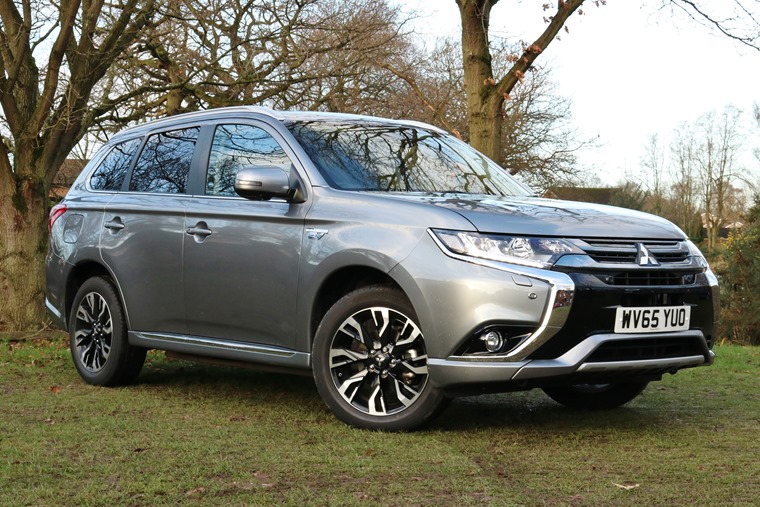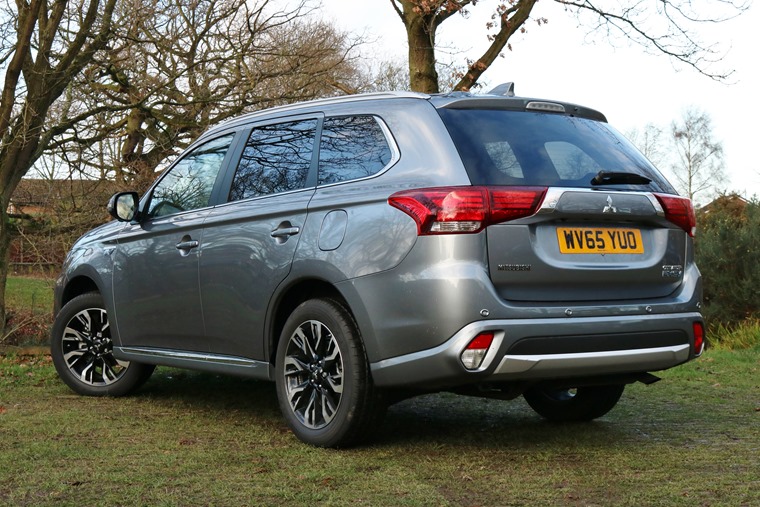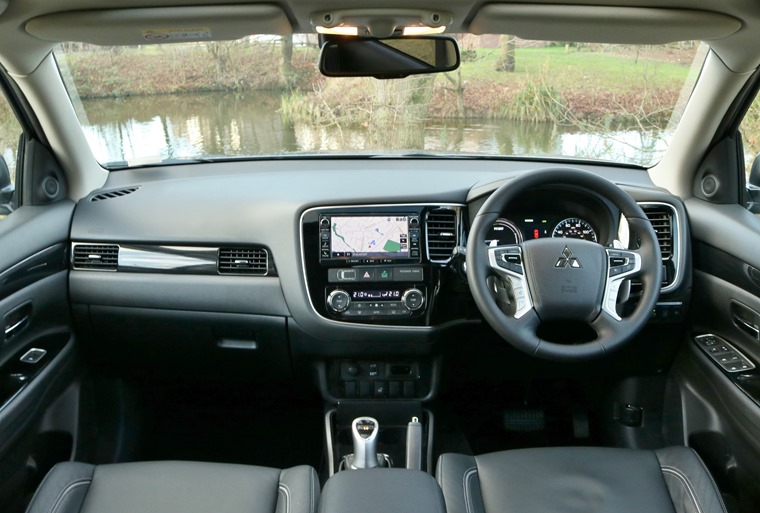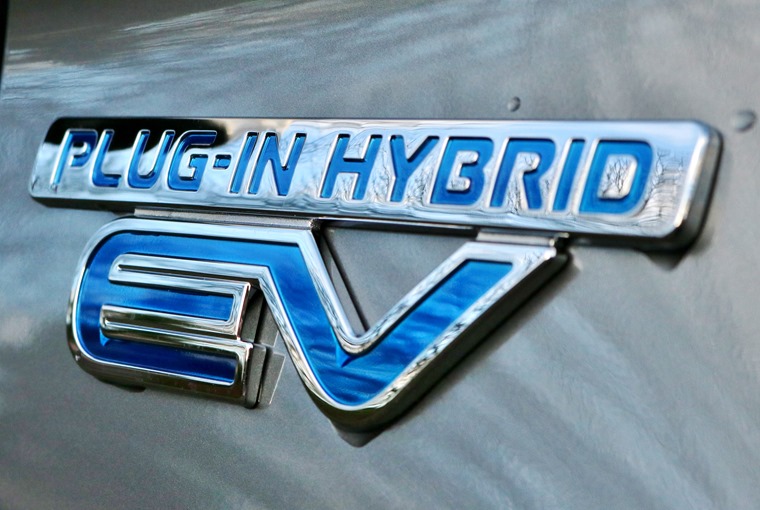Review: Mitsubishi Outlander PHEV 2016
Mitsubishi’s Outlander plug-in hybrid has been an unmitigated success. In less than two years, the car became Britain’s top-selling plug-in vehicle, eclipsing the Nissan Leaf with consummate ease.
That the excellent Outlander PHEV could achieve that feat was no surprise, but that Mitsubishi – a comparatively small car manufacturer with a recent history littered with decent, rather than exemplary cars – could come up with something so well engineered and so well priced caught many off guard.
For 2016, Mitsubishi has decided that the PHEV needs a revamp, so, at risk of ruining such a successful formula, the Japanese company has set to work, giving the Outlander an overhaul.

Mitsubishi Outlander leasing deals: Business / Personal
What’s changed?
Perhaps knowing that spoiling the Outlander PHEV would be a disaster for the relatively small manufacturer, Mitsubishi’s engineers have had to be careful with what they change.
The pre-facelift car’s impressive sales are testament to its competence, and though major problems were few and far between, we saw minor issues with the bland looks, occasionally thin cabin plastics and the wallowy cornering.
Each of these issues appears to have been addressed in one way or another, but the most noticeable change is the livened-up bodywork.
At the front, the PHEV has been treated to a big, glossy expanse of black around the grille and fog lights, as well as a lot of chrome-effect detailing.
Mitsubishi has done a similar job at the back, adding fiddly, shiny bits in a bid to give the PHEV a slightly classier appearance. They’ve even tried to add some interest to the previously featureless side panels, sticking a chrome-effect blade on the door sills. It doesn’t show up that well against the grey of our test car, but we suspect it’s quite effective when paired with darker shades.

The styling changes have made their way inside too, albeit taking slightly less prominence in a pretty much unchanged cabin. The boring old three-spoke steering wheel has been replaced by a button-festooned four-spoke wheel, while there’s a new wood-effect panel on the centre console. Other than that, however, it’s business as usual.
Under the skin, Mitsubishi has tweaked the suspension slightly to provide a better balance of comfort and handling, while there are minor changes to the engine to make it ever-so-slightly more efficient.
Have the changes made a difference?
In short, yes. The 2016 Outlander PHEV isn’t vastly different to the old car, but then it didn’t need to be.
We think the new look is slightly fussy, but it successfully removes any hint of the dull, workmanlike character that sort of suited the diesel Outlander but never sat right on the high-tech plug-in hybrid. Whether you call it classy or chintzy is a matter of taste, although we’re slightly more inclined to give Mitsubishi the benefit of the doubt and go with classy.
We’re fans of the interior changes too, and though there are still a couple of issues with the cabin plastics further back, the build quality is decent.

The best change of the lot, however, is the suspension modification. Cornering is far more enjoyable without the excessive body roll, and we’d even go as far as saying the PHEV drives quite well. It’s no sports car – the 11-second 0-62mph time puts paid to any dreams of Ferrari-bashing – but it is decent for a car of this size.
Thankfully, you don’t have to pay for this improvement with a drop in ride quality either, because the PHEV is exceptionally comfortable. Longer undulations will cause a moment of Cadillac-esque bobbing, but that’s soon brought back under control, while high-frequency broken road surfaces won’t unsettle the car in the least.
Another great addition is the new 360-degree parking camera. Operated either when the driver selects reverse or presses a button on the steering wheel, it provides a fairly clear image of the world around you and has multiple modes to suit the manoeuvre you’re trying to achieve.
What about the hybrid technology?
The PHEV’s powertrain may have been fettled very slightly, but it’s still powered by the same old combination of a 119bhp 2.0-litre four-cylinder petrol engine and an 80bhp electric motor on each axle.
Officially, that means you’ll have a 32-mile pure-electric range, and then the petrol engine will kick in to provide more power. The EU says this will equate to an impressive 156.9mpg (a marginal improvement on the old 148mpg figure), but don’t be fooled.
This is a “weighted” average that assumes you rarely do trips of over 30 miles and charge the batteries regularly, so a more accurate figure would be in the region of 50 or 60mpg, depending on your driving style.
That said, the 32-mile range is achievable with careful driving, and you should easily manage about 25 without trying.
Even better, your road tax is not calculated using real-world figures, so the 42g/km CO2 emissions mean private motorists won’t spend a penny on road tax and business users will be sitting pretty in the 5% company car tax bracket.

Read up on our top five plug-in hybrids
Which one should I go for?
If you want an Outlander PHEV you’ve essentially got a choice of three trim levels, but we’d go for the mid-range GX4h. A list price of £33,899 after the government grant for plug-in vehicles equates to average business leasing deals of £352 a month, while personal deals average out at around £425 a month.
For that money, though, you get leather upholstery, satellite navigation, heated seats, a sunroof, 18in alloys, a powered tailgate and various other creature comforts.
We do have a word of warning for you, however. Whatever you do, don’t confuse the GX4h with the GX4hs. It’s far more expensive (about £50 a month on average) and only really adds a few safety gizmos, most of which are quite annoying.
The verdict
This refresh is not a huge leap forward for the Outlander PHEV, but it is a strong step in the right direction. By keeping all that made the old one brilliant and trying to improve only on the old car’s drawbacks, Mitsubishi has ensured that the Outlander is still the king of the plug-in hybrids.